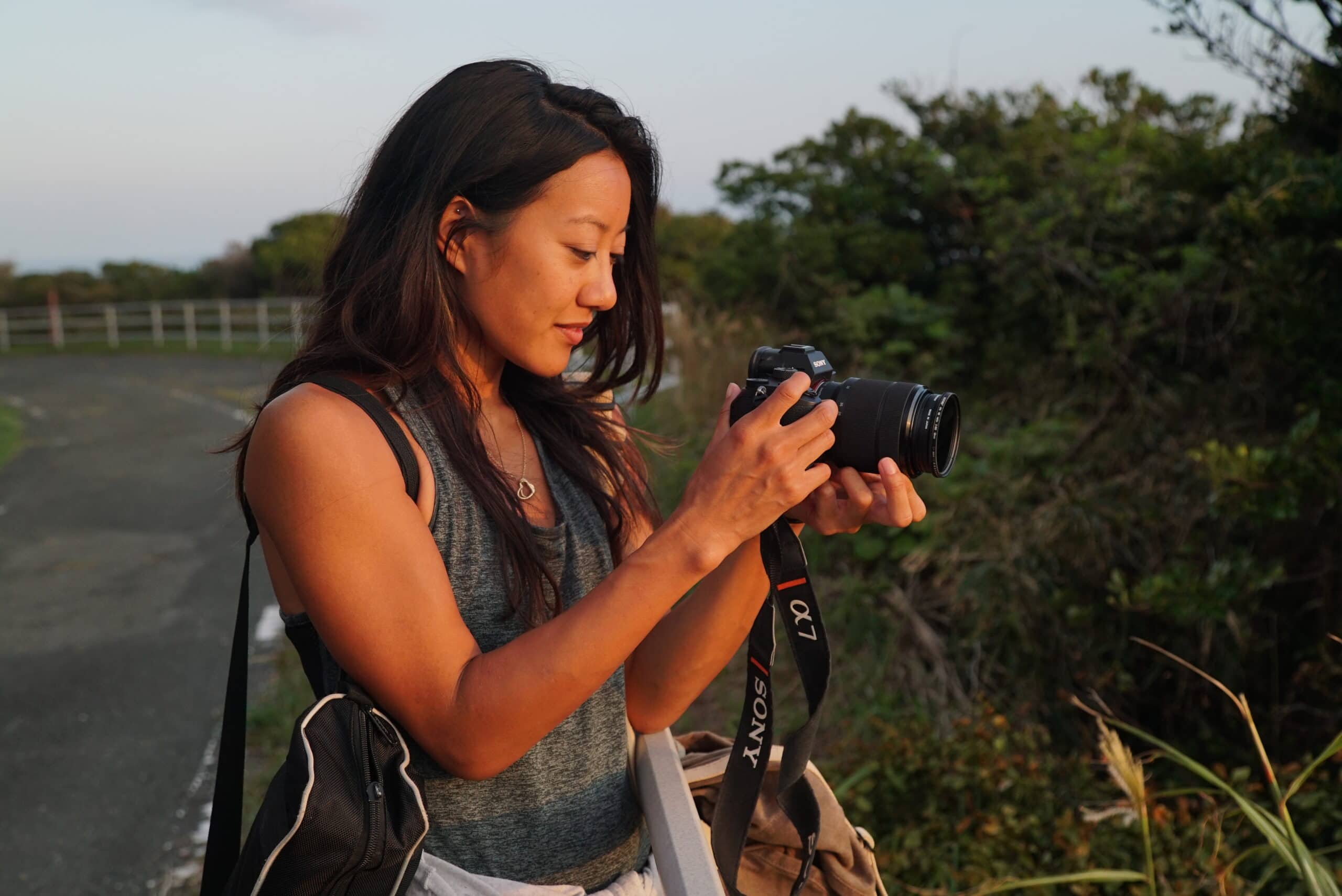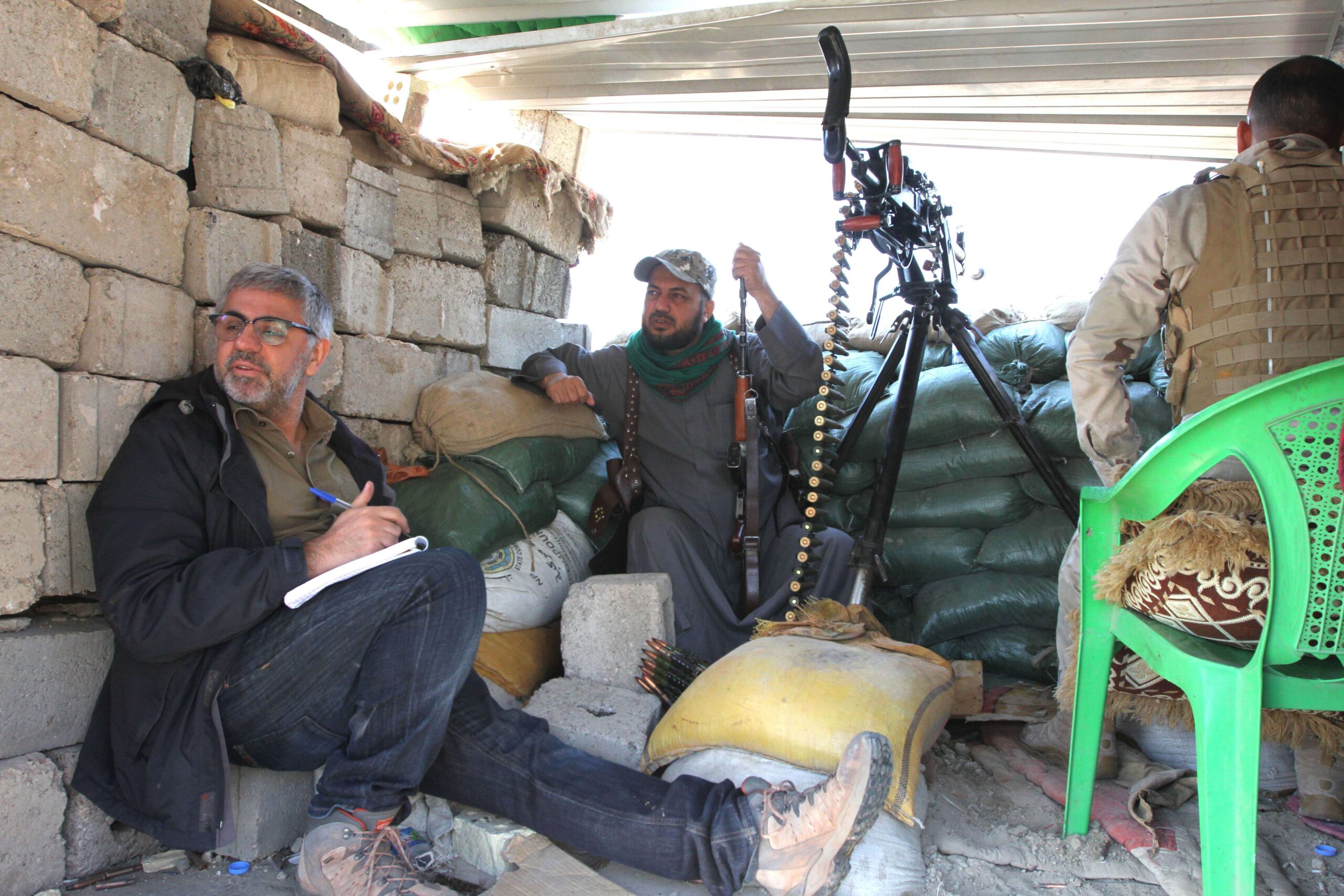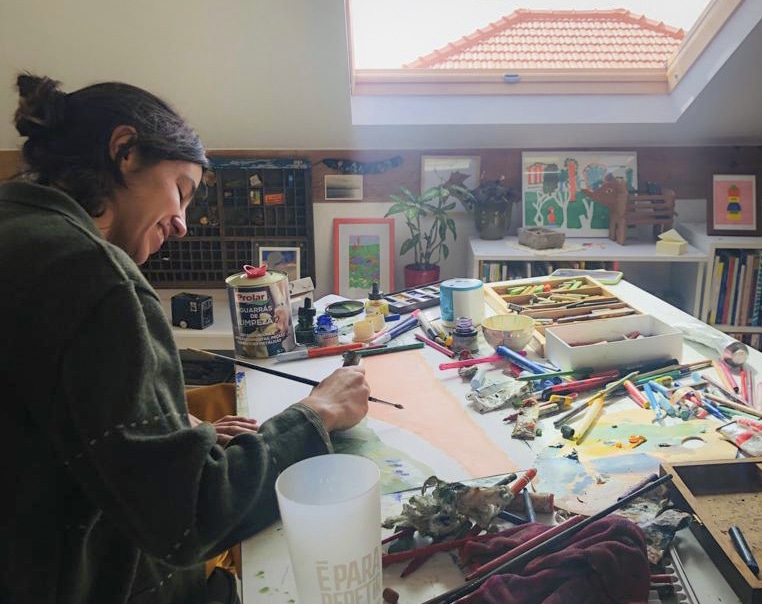Perched in a second story window of a hospital in East Jerusalem, Maya Levin tried to put aside the cries of the nurses surrounding her, and focused her camera on the attack unfolding on the street below. Israeli police had begun clubbing, kicking and punching a group of mourners carrying the casket of Palestinian American journalist Shireen Abu Akleh – who had been killed just days earlier by Israeli fire in the occupied West Bank.
A countless number of cameras recorded, broadcast, and streamed the attack, as the pallbearers were almost forced to drop Akleh’s remains on the ground. It was only until much later that news organizations published what Levin saw that day; high above the crowd, where no other photojournalist had decided to go.
Good visual storytelling is about finding a unique perspective. Levin found hers, but it wasn’t without great professional risk. And nearly a year later, World Press Photo honored Levin with a regional award for her photography.
Speaking from her home in Tel Aviv, Levin told me that had she actually been on assignment that day, she would never have captured her winning photograph. She also discussed why journalism is more important to her than photography, how she keeps her cool when chaos erupts, and why she thinks ADHD plays a major factor in her profession.
“…I think once you’ve been doing it for so long, it’s more than just a job. It’s like an agitated state of awareness, especially in a place where you just never know when there’s going to be some sort of attack and you just have to go…”
Jack Zahora: Do you see yourself as a professional photographer, or is photojournalism more of a lifestyle choice that makes you some money on the side?
Maya Levin: This is something I’ve had to think about a lot this year. I spent 10 years working in the Middle East as a professional photojournalist. I covered the Egyptian revolution, I went to the Syria border, and I spent a lot of time in the West Bank, Jerusalem and all over Israel. But freelancing was not financially viable for me, so I’m now primarily a photo editor. And yet I still care very much about this story, and I can’t really be here [in Tel Aviv] without covering it. And so I’ve been going out to cover the things that matter to me. And I think once you’ve been doing it for so long, it’s more than just a job. It’s like an agitated state of awareness, especially in a place where you just never know when there’s going to be some sort of attack and you just have to go –
JZ: An agitated state of awareness. I like that description. Because tell me if I’ve got this wrong, but the traits that you have as a photographer seem to force you to react differently to intense situations than how others might.
ML: So recently there was this car attack that happened here on the boardwalk in Tel Aviv. I was on my way to meet another photographer at his house for dinner with a few other friends. And I suddenly saw a group of ambulances going down the street. I immediately called him up and we both rushed over there. And our other friend was like, why on earth would you be on your way to dinner, hear there’s an attack, and want to go? She couldn’t fathom it.
JZ: So, why did you?
ML: It’s hard to explain to someone who doesn’t do this. But to a photographer, it’s not about whether you get to the scene of a story, it’s about how quickly you get there. It’s just a given. But it’s hard to explain why you would subject yourself to that kind of trauma – you just conditioned yourself not to think about it.
JZ: Were you always like this? Or did you build this kind of insatiable curiosity to the point where it becomes almost – dare I say – a compulsion?
ML: Are we going deep on this? Okay. I think that every photographer, pretty much every photographer I know, has ADHD. Like, let’s start with that. This is a high dopamine fix profession, which attracts people who are constantly seeking creativity, an interesting changing story, and a high adrenaline kind of job. And then beyond that, sure, I do think that my brain developed to fit this kind of profession.
“…to a photographer, it’s not about whether you get to the scene of a story, it’s about how quickly you get there. It’s just a given. But it’s hard to explain why you would subject yourself to that kind of trauma – you just conditioned yourself not to think about it.“
JZ: Let’s talk about your picture that won a World Press Photo award. You have said that you positioned yourself in the second floor window of a hospital, overlooking the morgue where Shireen Abu Akleh’s casket was being released? Why did you decide to position yourself there, and not next to the other photographers on the ground?
ML: The way the funeral was supposed to happen was that a hearse was supposed to transport her body to a church, and later it would be carried to her final burial site. However, a large crowd of her followers and fans formed, because Shireen was an iconic figure, and she belonged to the public, you know, and this large crowd wanted to honor her the way many martyrs are honored, which is by being carried through the streets of Jerusalem. And the Israeli police had not prepared for this, and decided that they weren’t going to let this happen. And so there was a lot of back and forth in the beginning about whether her casket was going to come out or not. And during this time, I was wandering around and trying to decide where I wanted to be when it did happen–
JZ: And that’s when you went into the hospital?
ML: So, I went into the hospital. And I was looking around, and I tried to go on the roof, and I tried different windows. And I finally settled on this second story window because it just felt like a good vantage point of the whole scene below, and, you know, the nurses up there were also taking photos with their phones.
JZ: Was this position your first choice?
ML: I was looking for a lot of different vantage points. I will say that I wasn’t specifically shooting for somebody that day. And I think having the freedom of not owing somebody a photo at the end of the day allowed me to take the gamble of standing up in that window. Because the sensible thing to do in a scene like that is to be exactly where the action is happening, and to take the photos from there. Also it wasn’t clear if they were going to barricade the hospital and let us move on to the next location. And so I took this gamble.
JZ: It also turned out to be a safer position in the end. Didn’t it?
ML: I have to be honest, I hadn’t been in a scrum of protest violence, or just in a scrum in a while. And I was thinking very much that I want to be in a safer spot. But also, some other spots that I stood in, I don’t know, there was a tree my way or there were people in my way. They just weren’t good vantage points.
JZ: What was the reaction of the nurses next to you when the Israeli police began attacking people at the procession?
ML: They were crying out — they were shocked as we’re watching this violence happening in real time. As the coffin [almost] falls on the ground, I’m trying to remember — it’s such a blur but they were all deeply disturbed by it.
JZ: How do you stay focused? Or did you stay focused? Where you able to detach yourself from the mayhem, or did it prevent you in some way from doing your job?
ML: I think you disassociate yourself when stuff like that happens and just focus on what you’re doing. Or I do anyways. I just get into the mode of staying focused on the image. And I think at some point the nurses were jostling me because some wanted to get a better view. But I was tired to hold firm in my spot because I realized something was happening. And I also realized that there was no other photographers up where I was.
JZ: I’m tempted to ask you about the editing process, but is there a step in between that shouldn’t be looked over?
ML: I will say that there was no editing done on my photos. There’s no crop on any of the images, they are just as they are when I shot them. But I think the way that the photos ended up with the Associated Press is interesting. Because after the incident I was in a car with a bunch of other photographers. And I was showing them my photos. So, I found an AP photographer and I said to him, would you guys be interested in this? And he’s [says] we don’t usually buy photos if we have a photographer on the scene, but let’s try. So we texted them to the AP bureau chief, and he [says], I’ll buy four of these.
“I think you disassociate yourself when stuff like that happens and just focus on what you’re doing. Or I do anyways. I just get into the mode of staying focused on the image.“
JZ: What is it about those four photos that made the Associated Press break protocol?
ML: I think I just had a different perspective than any other wire photographer on the ground. All the other wire photographers were standing next to each other, and I happened to stand somewhere else. And in the world of wires, when you have something different, that’s what they seek.
JZ: So what did World Press Photo see in it?
ML: I think it’s a combination of things. I think the story itself is important. And if you take a great photo of something that doesn’t matter, then nobody’s gonna care. So, I think the endlessness of the injustice that day was just in and of itself shocking. And then, maybe, I think, because I have this, this vantage point from above, you just get a perspective on the scene that allows you to really see everything in a detached way.
JZ: Do you have a specific kind of aesthetic – whether it’s how you shoot or edit – that make your photos unique?
ML: You know, there are some photographers that do. But that’s just not where my focus is. My focus has always just been to shoot the things that are important to me.
JZ: So for you, when it comes to photojournalism, the news is more important to you than the craft?
ML: Yeah, absolutely. I mean, the craft is important because the craft is what brings people’s attention to whatever the story is – but the story matters more to me.
DISCLAIMER: This interview has been edited for clarity and brevity.



